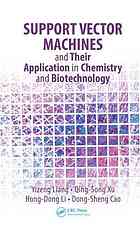

Most ebook files are in PDF format, so you can easily read them using various software such as Foxit Reader or directly on the Google Chrome browser.
Some ebook files are released by publishers in other formats such as .awz, .mobi, .epub, .fb2, etc. You may need to install specific software to read these formats on mobile/PC, such as Calibre.
Please read the tutorial at this link: https://ebookbell.com/faq
We offer FREE conversion to the popular formats you request; however, this may take some time. Therefore, right after payment, please email us, and we will try to provide the service as quickly as possible.
For some exceptional file formats or broken links (if any), please refrain from opening any disputes. Instead, email us first, and we will try to assist within a maximum of 6 hours.
EbookBell Team

4.4
42 reviews''Support vector machines (SVMs) seem a very promising kernel-based machine learning method originally developed for pattern recognition and later extended to multivariate regression. What distinguishes SVMs from traditional learning methods lies in its exclusive objective function, which minimizes the structural risk of the model. The introduction of the kernel function into SVMs made it extremely attractive, since it opens a new door for chemists/biologists to use SVMs to solve difficult nonlinear problems in chemistry and biotechnology through the simple linear transformation technique. The distinctive features and excellent empirical performances of SVMs have drawn the eyes of chemists and biologists so much that a number of papers, mainly concerned with the applications of SVMs, have been published in chemistry and biotechnology in recent years. These applications cover a large scope of chemical and/or biological meaningful problems, e.g. spectral calibration, drug design, quantitative structure-activity/property relationship (QSAR/QSPR), food quality control, chemical reaction monitoring, metabolic fingerprint analysis, protein structure and function prediction, microarray data-based cancer classification and so on. However, in order to efficiently apply this rather new technique to solve difficult problems in chemistry and biotechnology, one should have a sound in-depth understanding of what kind information this new mathematical tool could really provide and what its statistic property is. This book aims at giving a deeper and more thorough description of the mechanism of SVMs from the point of view of chemists/biologists and hence to make it easy for chemists and biologists to understand''--